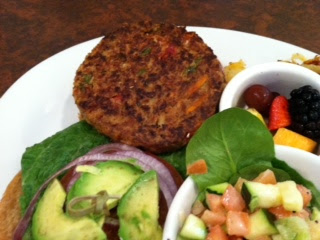
I was really angry at myself last week for enjoying the aromas of the food court at the mall and fascinated by the way I responded to those smells. Is there a physiological or psychological trigger in those smells that ignited my olfactory and gustatory senses? Will I always be affected or influenced by those smells…especially freshly brewed coffee, whose smell I enjoy more than its taste? Or, will years of not eating those foods eventually make me immune to their allure? I began to wonder why we eat, not just why we eat fried or greasy foods, but why we eat and when and how we begin to develop our eating patterns.
Hunger for infants is a strong biological urge. A baby’s cry is a demand to be fed immediately. Infants know when they are hungry and what they need to eat. But as soon as babies are able to eat solid foods, their eating habits and behaviors become conditioned by their caregivers. Our caregivers decide what kinds of foods to feed us, and whether we will receive a healthy portion of broccoli or a hotdog that has been filled with chemicals. Children’s good behavior is rewarded with sugary sweets, ice cream and candy. We become conditioned to eating in certain ways and under a variety of circumstances. As a child I was told to “clean my plate.” After all, there were children starving in Africa who weren’t as fortunate as I was. We learned to eat to please other people. I usually eat three times a day. Is that a result of conditioning? I usually know when I am hungry; I sense a physical cue, whether it’s a growl or a pang in my stomach, and all I need to do is to find something that I find suitable to eat.
However, we eat for many reasons other than hunger. We eat socially, because that is what is expected of us in that situation. We eat when the opportunity presents itself, whether it is because we are passing through a food court or passing by a bakery, watching a movie or sitting at a ball game. We eat because the clock tells us that it is time to eat. We eat because it’s there. We eat to comfort ourselves. Sometimes we eat automatically. We see a trigger food and, before we are aware, we have eaten it. We eat as soon as we come home from work. We eat at the computer or in front of the television. We eat until all the food on our plate is gone. Our bodies know when, what and how much to eat to maintain functioning, but we have been conditioned to eat in response to certain stimuli. We forget to listen to what our body is telling us.
As adults we continue to overeat because we have been taught to clean our plates. Restaurants pile on the food, and the average portion size has quadrupled in the last 20 years. And yet, we live at a time when our society is obsessed with weight, body size and shape. We celebrate the July 4th holiday, Memorial Day, Thanksgiving and Christmas where food dominates. As a culture we are confused about the role that food should play in our lives. We use food for more than just satisfying our hunger. We eat when we are tired, anxious, sad, happy, or bored. We eat to celebrate and to mourn.
We are fortunate as a nation to have more food than we can eat. It is true that many people all over the world are starving. In the past there were always periods of feast and famine, and as a species we learned to eat when food was plentiful. That no longer serves us, but we continue to eat more food than we need, and in the United States we no longer worry about famines. The body is designed to survive. Eating lots of food today to prepare for scarcity tomorrow made sense as a survival mode for our ancestors, but it it make no sense today.
Eating need not be reflexive or simply the product of learned habits. We can change those habits. In the 1960s, we announced that “we are what we eat.” That is as true today as it was then. The question is what we choose to be and how that is reflected in the food we consume.


